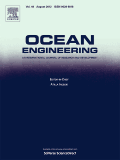
Ocean Engineering
Scope & Guideline
Transforming Challenges into Oceanic Opportunities
Introduction
Aims and Scopes
- Marine Structure Design and Analysis:
This area encompasses the design, analysis, and optimization of various marine structures including offshore platforms, floating wind turbines, and breakwaters, focusing on their hydrodynamic performance under environmental loads. - Hydrodynamics and Fluid Mechanics:
Research in this scope emphasizes the study of fluid dynamics related to marine environments, exploring phenomena such as wave interactions, vortex-induced vibrations, and fluid-structure interactions. - Renewable Marine Energy Technologies:
The journal emphasizes innovative developments in marine renewable energy, including wave energy converters, wind turbines, and hybrid energy systems, assessing their performance and integration into existing marine infrastructure. - Environmental Impact and Marine Safety:
This area investigates the environmental implications of marine engineering projects, including risk assessments, the impact of extreme weather events, and the safety of marine operations. - Numerical and Experimental Methods:
The journal promotes the use of advanced numerical simulations and experimental techniques to evaluate marine engineering problems, fostering the development of new methodologies for accurate modeling and analysis.
Trending and Emerging
- Sustainable and Hybrid Marine Energy Systems:
There is a growing emphasis on developing hybrid systems that combine various renewable energy sources, such as wind and wave energy, to enhance efficiency and sustainability in marine energy production. - Advanced Computational Methods and AI Applications:
The integration of artificial intelligence and advanced computational techniques for modeling and simulation is on the rise, enabling more accurate predictions of marine system behaviors and improving design processes. - Climate Change Adaptation Strategies:
Research focusing on the adaptation of marine structures to climate change impacts, such as rising sea levels and increased storm intensity, is becoming increasingly relevant, highlighting the need for resilient engineering solutions. - Innovative Materials and Technologies:
The exploration of new materials, including bio-inspired designs and smart materials, is gaining traction, aiming to enhance the durability and performance of marine structures under extreme conditions. - Environmental Monitoring and Impact Assessment:
There is an increasing focus on the development of methodologies for real-time environmental monitoring and impact assessments, particularly in the context of offshore construction and marine ecosystem protection.
Declining or Waning
- Traditional Ship Design and Stability Analysis:
Research specifically centered on conventional ship design and stability has decreased, likely due to a shift towards more innovative and sustainable maritime solutions and a focus on advanced materials and technologies. - Conventional Coastal Engineering Practices:
Studies focused solely on traditional coastal engineering practices, such as basic seawall design and riprap placement, have waned as the field increasingly adopts more integrated and environmentally conscious approaches. - Static Structural Analysis:
The focus on static analysis of marine structures has diminished in favor of dynamic analyses that account for the complex interactions of marine environments, including wave forces and environmental loading.
Similar Journals
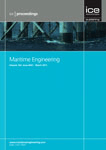
PROCEEDINGS OF THE INSTITUTION OF CIVIL ENGINEERS-MARITIME ENGINEERING
Elevating Standards in Maritime Engineering Research.PROCEEDINGS OF THE INSTITUTION OF CIVIL ENGINEERS-MARITIME ENGINEERING, published by Emerald Group Publishing Ltd, is a leading journal in the field of Maritime Engineering. With a reputable ISSN of 1741-7597 and an E-ISSN of 1751-7737, this journal has established itself as a cornerstone for researchers, professionals, and students keen to explore the complexities of ocean engineering. Operating primarily from the United Kingdom, it has made significant contributions to the advancement of the maritime industry since its inception, covering research from 2001 to 2024. The journal currently holds a Q3 ranking in Ocean Engineering as classified by Scopus, where it ranks 21st among 105 journals in the category, placing it in the 80th percentile, which highlights its influence and relevance in contemporary marine research. Through a rigorously peer-reviewed process, the journal publishes innovative and high-quality articles that encompass broad aspects of maritime engineering, including design, construction, and sustainability, thus serving as a vital resource for those engaged in this dynamic field. By fostering dialogue among professionals and providing access to cutting-edge research, the PROCEEDINGS OF THE INSTITUTION OF CIVIL ENGINEERS-MARITIME ENGINEERING continues to shape the future of maritime engineering practice and education.
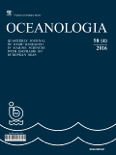
OCEANOLOGIA
Advancing Knowledge in Aquatic ResearchOCEANOLOGIA, a distinguished academic journal published by the Polish Academy of Sciences, Institute of Oceanology, serves as a pivotal platform for researchers and professionals in the fields of Aquatic Science, Oceanography, and Ocean Engineering. Established in 1973 and transitioning to Open Access in 2011, this peer-reviewed journal promotes the dissemination of high-quality research across its diverse scope of ocean-related topics, aligning with its commitment to advancing marine science. With a notable impact factor underscored by its positioning in the Q1 and Q2 quartiles of recognized categories, OCEANOLOGIA stands out with impressive Scopus Rankings, including 49/247 in Aquatic Science and 24/105 in Ocean Engineering, reflecting its significance in the global research landscape. The journal's dedication to publishing cutting-edge studies ensures that it continues to influence both academic discourse and practical applications in ocean-related fields, making it an essential resource for students, researchers, and professionals aiming to contribute to the advancement of oceanic studies.

CONTINENTAL SHELF RESEARCH
Exploring the Depths of Marine KnowledgeCONTINENTAL SHELF RESEARCH, published by PERGAMON-ELSEVIER SCIENCE LTD, is an esteemed journal within the fields of Aquatic Science, Geology, and Oceanography, reflecting a compelling intersection of these disciplines. Since its inception in 1982, this journal has served as a premier platform for disseminating cutting-edge research relevant to the continental shelf ecosystem, including its geological features, biological resources, and physical processes. With a Category Quartile ranking of Q1 in Aquatic Science and prominent Q2 standings in Geology and Oceanography, it is recognized for its rigorous peer-review standards and impactful contributions, evidenced by its respective rankings in Scopus. Researchers and professionals are encouraged to engage with the journal's array of high-quality articles that not only enhance scientific understanding but also inform policy and conservation efforts. This dedication to advancing knowledge makes CONTINENTAL SHELF RESEARCH an essential resource for those passionate about marine and coastal studies in the United Kingdom and globally.

CHINA OCEAN ENGINEERING
Exploring the Depths of Ocean InnovationCHINA OCEAN ENGINEERING, published by SPRINGER MEDIZIN VERLAG GmBH, is a prominent journal in the fields of Mechanical Engineering, Ocean Engineering, and associated environmental sciences. With its ISSN 0890-5487 and E-ISSN 2191-8945, this journal caters to a broad audience engaged in research and development related to ocean systems and technologies. As evidenced by its Q2 ranking in Mechanical Engineering and Ocean Engineering, as well as its Q3 placement in Oceanography and Renewable Energy, Sustainability and the Environment for 2023, it provides a critical platform for disseminating innovative research and progressive ideas in these dynamic and interdisciplinary fields. The journal is committed to advancing the science of ocean engineering by focusing on sustainable practices and technological advancement, making it an essential resource for researchers, professionals, and students alike. With contributions from leading experts worldwide, CHINA OCEAN ENGINEERING is dedicated to exploring the multifaceted challenges and opportunities presented by our oceans.
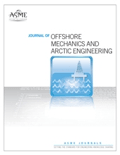
JOURNAL OF OFFSHORE MECHANICS AND ARCTIC ENGINEERING-TRANSACTIONS OF THE ASME
Championing safety and sustainability in extreme conditions.JOURNAL OF OFFSHORE MECHANICS AND ARCTIC ENGINEERING-TRANSACTIONS OF THE ASME (ISSN: 0892-7219; E-ISSN: 1528-896X) is a premier publication by the American Society of Mechanical Engineers (ASME), dedicated to advancing the field of offshore mechanics and Arctic engineering. Established in 1987 and running through 2025, this journal provides a crucial platform for researchers and practitioners to disseminate their findings in a rapidly evolving sector faced with unique challenges related to energy, ocean engineering, and mechanical engineering. With a notable impact reflected in its Scopus ranks—#224 in Mechanical Engineering and #39 in Ocean Engineering—the journal holds a significant position in the academic community, publishing high-quality peer-reviewed articles that span innovative technologies, safety, and environmental considerations in offshore and Arctic contexts. While currently not adopting an Open Access model, its strategic focus and rigorous standards make it an essential resource for students, professionals, and researchers passionate about expanding knowledge in these critical engineering domains.

Journal of Operational Oceanography
Connecting Researchers to Drive Oceanographic InnovationThe Journal of Operational Oceanography, published by Taylor & Francis Ltd, stands as a pivotal platform within the field of oceanography, focusing on the integration of operational practices, technology, and scientific research. With a strong impact factor and a notable Q2 quartile ranking in the category of Earth and Planetary Sciences, this journal offers researchers, professionals, and students a vital resource for disseminating new knowledge and innovative methodologies related to ocean studies. Covering a range of topics from marine data analysis to the application of oceanographic principles in sustainable practices, the journal’s content is crucial for advancing understanding in this dynamic field. Operating since 2008 and continuing through 2024, it is dedicated to fostering collaboration and dialogue among the scientific community, ensuring accessibility to essential findings that drive informed decision-making in marine science. With its commitment to high-quality, peer-reviewed articles and a ranking in the top 10th percentile of its category, the Journal of Operational Oceanography is an indispensable resource for those looking to make significant contributions to marine research.
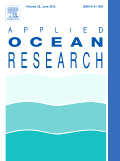
APPLIED OCEAN RESEARCH
Unlocking the Potential of Our Oceans Through ResearchApplied Ocean Research, published by Elsevier Scientific Ltd, stands as a premier journal in the field of ocean engineering, with an impressive impact factor derived from its esteemed reputation and contributions to the discipline. Having been established in 1979, the journal has continually provided a platform for groundbreaking research, fostering innovation and advancement in applied ocean science through a diverse array of topics, including marine technology, coastal engineering, and ocean energy. Currently holding a prestigious Q1 ranking in the Scopus category of Ocean Engineering, with a rank of 10 out of 105 and a notable 90th percentile, Applied Ocean Research is a vital resource for researchers, professionals, and students dedicated to understanding and solving complex challenges linked to ocean environments. Although it provides subscription-based access, the depth and quality of research featured make it a key reference point for those in academia and industry alike. Located in the heart of London, this journal embodies a commitment to excellence in the study of ocean phenomena, positioning itself as a critical conduit for knowledge dissemination and professional growth in this dynamic field.

MARINE GEORESOURCES & GEOTECHNOLOGY
Exploring the Depths of Marine InnovationMARINE GEORESOURCES & GEOTECHNOLOGY, published by Taylor & Francis Inc, is a premier interdisciplinary journal that addresses critical issues at the intersection of geosciences, engineering, and oceanography. With an ISSN of 1064-119X and E-ISSN 1521-0618, this journal has been pivotal since its inception in 1993, delivering high-quality research through 2024. Recognized for its scholarly impact, it boasts a Q2 ranking in key categories including Geotechnical Engineering, Ocean Engineering, and Oceanography, demonstrating its significance within these fields. The journal features a dynamic range of articles, encompassing both theoretical and application-based studies that contribute to understanding marine resources and geotechnical challenges in various environments. Engaging with MARINE GEORESOURCES & GEOTECHNOLOGY ensures that researchers, professionals, and students remain at the forefront of developments in marine science and technology, while fostering collaboration and innovation in tackling complex geological and oceanographic problems.
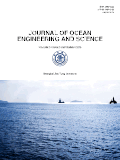
Journal of Ocean Engineering and Science
Connecting global expertise to protect our oceans.The Journal of Ocean Engineering and Science, published by Elsevier, is a prominent academic journal dedicated to advancing the field of ocean engineering and environmental sciences. Since its inception as an Open Access journal in 2016, it has rapidly gained recognition, achieving significant impact factor ratings with notable placements in the prestigious Q1 category for Ocean Engineering and Oceanography, and Q2 for Environmental Engineering in 2023. With a remarkable ranking of #3 out of 105 in Ocean Engineering and #4 out of 145 in Oceanography according to Scopus, the journal plays a critical role in disseminating cutting-edge research and innovative solutions addressing complex challenges faced by marine environments. Operating from Amsterdam, Netherlands, the Journal of Ocean Engineering and Science invites contributions from researchers, professionals, and students worldwide, emphasizing the importance of interdisciplinary approaches in achieving sustainable maritime practices.

OCEAN DYNAMICS
Transforming Understanding of Oceanic PhenomenaOCEAN DYNAMICS is a premier peer-reviewed journal published by Springer Heidelberg, dedicated to advancing the field of oceanography. With an ISSN of 1616-7341 and an E-ISSN of 1616-7228, the journal has established itself as a key resource for researchers and professionals interested in the dynamic processes of the world's oceans. As of 2023, it holds an impressive Q2 category ranking in Oceanography, placing it among the top journals in its field (Rank #34/145, 76th percentile in Earth and Planetary Sciences). Although operating under a traditional publishing model without open access options, OCEAN DYNAMICS continues to provide valuable insights and a platform for innovative research, boasting coverage from 2001 to 2024. Researchers and students alike will benefit from this journal's commitment to showcasing cutting-edge studies that enhance our understanding of oceanographic phenomena.